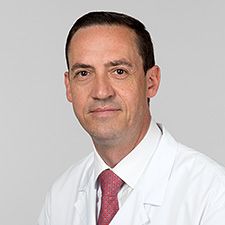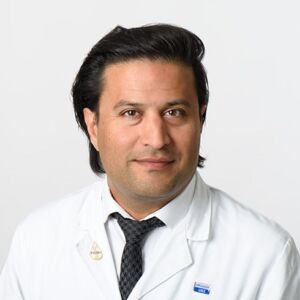In patients whose prostate cancer is small, very slow growing, has a low histologic grade of cancer cell differentiation (Gleason Score), and does not cause symptoms, the tumor is often only monitored regularly. This means that the patient comes to the clinic for regular check-ups. No specific treatment is given. This active monitoring is called “Active Surveillance”. Patients benefit from the fact that they do not have to put up with the side effects of active therapy. The European guidelines for the treatment of prostate cancer now recommend that low-risk prostate cancer should no longer be actively treated.
Who is Active Surveillance suitable for?
Active Surveillance is suitable for patients with localized, slow-growing prostate cancer with a low risk. As a rule, the Gleason score should not be greater than 6 and the PSA value should be less than 10 ng/ml. The Gleason score is a method of assessing the degree of aggressiveness of prostate cancer based on the appearance of the cancer cells under the microscope. The cells were previously removed during a prostate biopsy. Every cancer case is discussed at our interdisciplinary tumor board in order to recommend the best form of therapy for each patient.
New genetic tests can help to decide whether the cancer should only be monitored or whether active therapy should be used. At the USZ we offer the Prolaris test.
New genetic test for better treatment decisions in prostate cancer
With the help of a newly developed test, the Prolaris test, the risk of prostate cancer progression can be better assessed.
This test is carried out on removed cancer cells (biopsy material) and assesses the aggressiveness of prostate cancer by analyzing the activity of certain genes in the cancer cells. This means that individual treatment decisions can be made with more certainty, e.g. whether active surveillance or surgery should be performed. This is particularly helpful in borderline cases such as patients with a large Gleason.
How does Active Surveillance work?
Patients who are under active surveillance with us come to us for check-ups every 6 months for the first 2 years after diagnosis. The PSA value is determined during these examinations. In addition, a further biopsy and a multi-parametric MRI (magnetic resonance imaging) of the prostate are carried out in the first three years. Multi-parametric MRI combines several MRI techniques to produce detailed images of the prostate, allowing doctors to better distinguish between healthy and suspected cancerous tissue. This improves the accuracy of the diagnosis and helps with treatment planning.
What happens if treatment is necessary?
Active Surveillance can be terminated at any time and active treatment such as HIFU, cryotherapy, surgery or radiation can be started. Good care and close monitoring are important in order to be able to react to changes in the tumor.
For whom is the GreenlightTM laser surgery suitable?
More information on the application of active monitoring in the canton of Zurich
More information
Further treatment options for prostate cancer
Best urology clinic
The Clinic for Urology has been ranked as the best urology specialist clinic in Switzerland in the current ranking of the international news magazine Newsweek “The World’s Best Specialized Hospitals 2025”.

More about the Newsweek ranking




